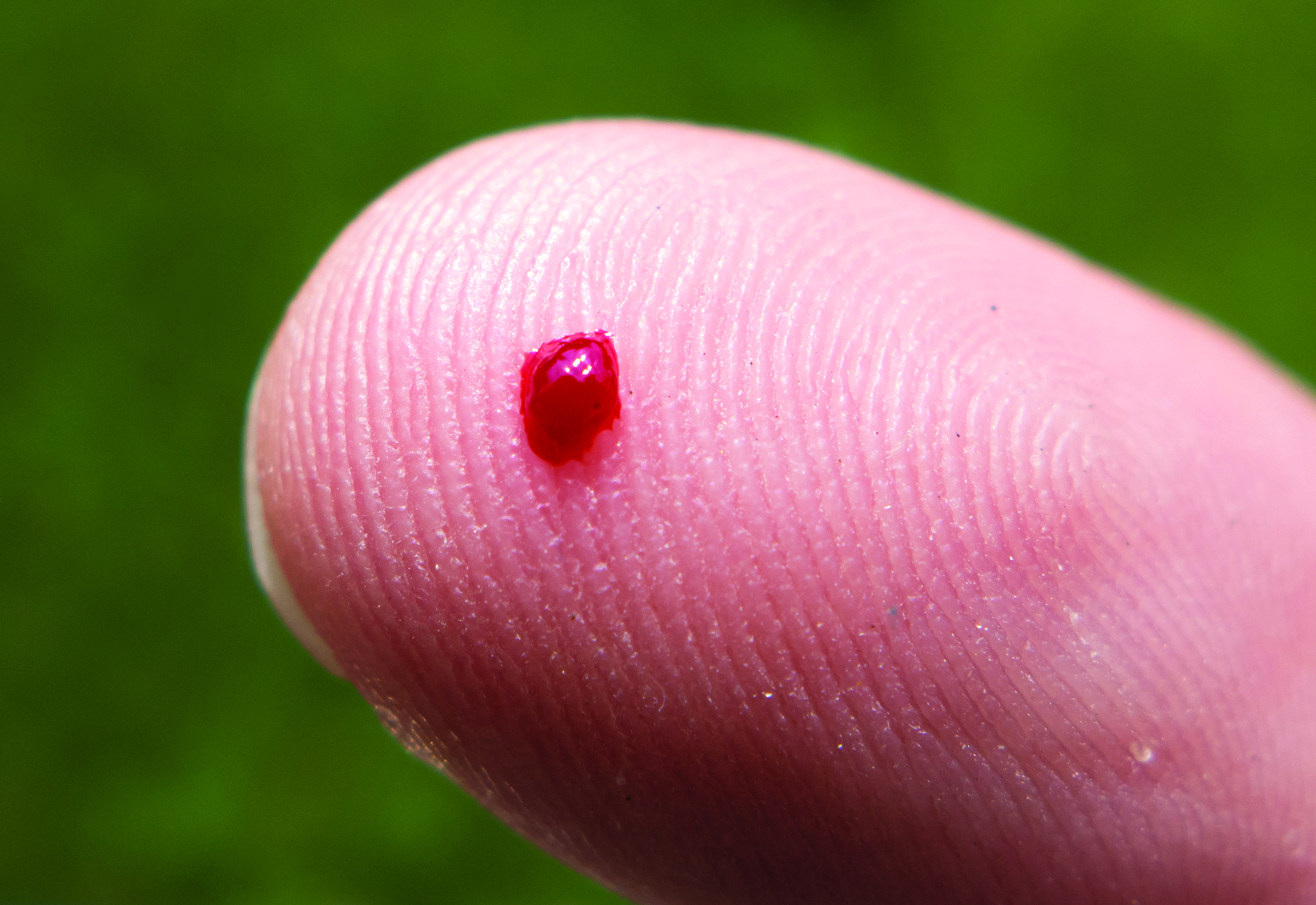A 5-year look back and lessons learned from EPINet®
- Increasing rates of diabetes means more injection devices in all healthcare settings, which can lead to increased rates of needlestick injuries to nurses.
- OSHA requires the evaluation and use of safety-engineered medical devices designed to reduce injuries from contaminated needles.
- Nurses have a vital role to play in protecting themselves and those around them.
Editor’s note: This article is the first in a two-part series brought to you in partnership with the International Safety Center as a look back to a 2018 series. Part Two will focus on building programs to reduce sharps injuries for insulin injection.
A lot can change in healthcare over 5 years, including advancements in precise and early diagnosis of disease, treatment options, expansion of outpatient and pharmacy services, robotics for surgery and endoscopy, extended life span and even, yes, a global pandemic. However, since the International Safety Center last shared its national needlestick and sharp object injury data from its Exposure Prevention Information Network (EPINet®), little has changed as it relates to occupational exposure to bloodborne and infectious disease as a result of percutaneous injuries. This is especially true for injuries caused by disposable needles and syringes used for insulin injection.
Diabetes, infectious disease prevalence, needlestick injury risk
Increasing rates of diabetes, especially insulin-dependent type 2 diabetes, translates into more injection devices (both syringes and needles on multidose pens) in all healthcare settings, which has led to increased rates of needlesticks to nurses and other caregivers. The occupational health and infection prevention communities must take note of obvious trends to protect patient and resident care providers in all settings, including hospitals, long-term care facilities, home, and school. (See Diabetes data.)
Diabetes data
In 2017, the Centers for Disease Control and Prevention (CDC) estimated that more than 30 million people in the United States live with diagnosed or undiagnosed diabetes. Today, the CDC estimates that 133 million are living with diabetes or pre-diabetes—almost 4.5 times higher. The American Diabetes Association estimates that 1.5 million Americans are newly diagnosed with diabetes every year. As a result of reduced primary care during the pandemic, that number may be higher.
Hepatitis C (HCV) and co-infection with HIV are becoming more prevalent, and the CDC estimates that 21% of people living with HIV also have HCV. The CDC also estimates that about 40% of people who have HCV, don’t know it. Cases of HCV are increasing; they’re highest among people under 40, who make up nearly 30% of all type 2 diabetes diagnoses. After COVID-19, HCV is the leading cause of infectious disease death among Baby Boomers.
Early post-exposure evaluation, source testing, and prophylaxis can help minimize seroconversion in healthcare worker populations.
Needlestick data
Since the mid-1990s, EPINet has collected data from a long-time aggregate of U.S. hospitals, which function as EPINet Network Facilities. EPINet reports summary data for each year at internationalsafetycenter.org. (See EPINet stats.)
EPINet stats
- According to EPINet, from 2017 to 2021, 21% of all percutaneous injuries occurred when using a disposable syringe, with insulin needles accounting for 23.8%. These rates were up from the last 5-year period (2012–2016) where 19.5% were related to disposable syringes with insulin needles. Of those insulin needle injuries, 95.7% occurred to nurses.
- Of all insulin needle injuries in acute care, 83.9% occurred in the patient or exam room; 7.1%, in intensive or critical care; and 3.4%, in either the operating or emergency room.
- 2021 EPINet data indicate that, although 87.8% of insulin needles had safety mechanisms, 75.6% of injured workers said they didn’t activate the safety feature. Of those, 53.7% of workers indicated that the injury happened before activation of the safety feature and 37.4% occurred during activation.
These data cry out for closer attention to device review and evaluation, better and more intuitive designs, and additional passive features, including pens and pen needles with automatic or passive safety features at both the user and connector ends. The best designs might require no action by the user to activate a safety feature.
OSHA compliance
The Occupational Safety and Health Administration (OSHA) Bloodborne Pathogens Standard (BPS) (29 CFR 1910.1030), as modified by the 2000 Needlestick Safety and Prevention Act, requires the evaluation and use of safety-engineered medical devices for the sole purpose of reducing injuries from contaminated needles.
Safety-engineered designs (sharps injury prevention features) of disposable syringe needles include sheaths and covers, retractable and blunt needles, and single-handed and intuitive use. Pen needle safety designs include shields or protective features on the patient end and on the pen connection.
OSHA BPS requirements include involving frontline nonmanagerial staff members in the evaluation of disposable insulin syringes and pen needles to ensure safety devices will be used and safety features activated. In addition, the employer’s exposure control plan must include review documentation and be updated annually.
Consider and act
Now that you know the facts, take steps to protect yourself and those around you.
Consider engineering controls
Compliance with the OSHA BPS is a critical part of a workplace exposure control plan. This includes the requirement to evaluate engineering controls, including devices with sharps injury prevention features.
Take action. Speak up. On your unit or in your care environment, participate in the evaluation of devices with safety or injury prevention features, including insulin syringes and pen needles. This includes protective features from all sharp ends of a needle or device.
Consider injection technique
Injuries frequently occur to a user’s nondominant hand when pinching the skin to prepare for a subcutaneous injection.
Take action. Ditch the pinch and select the shortest needle possible to minimize the need for a skinfold. Simplifying the injection technique reduces the risk of needlestick and bilateral injuries.
Consider your surroundings
Injury from needles and disposable syringes used for subcutaneous injections and insulin delivery are the most prevalent type of injury.
Take action. Be diligent and stay alert when delivering insulin and when you’re in the room with someone else who is administering it. In some settings, such as long-term or resident care, pens and pen needles may be a better or safer option than multidose vials and disposable syringes.
Consider downstream risk
More than 20% of needlesticks and sharps injuries occur to those who aren’t the original user of the device, such as environmental services workers, waste haulers, and laundry personnel.
Take action. When using syringes, check for safety feature activation; when using pen needles, ensure all sharp ends are automatically protected as much as possible. These steps ensure safety of the user and downstream workers who may be exposed during and after disposal.
The authors work at the International Safety Center (InternationalSafetyCenter.org). Amber Hogan Mitchell is president and executive director. Ginger B. Parker is vice president and chief information officer.
American Nurse Journal. 2023; 18(8). Doi: 10.51256/ANJ082322
References
American Diabetes Association. Economic costs of diabetes in the U.S. in 2012. Diabetes Care. 2013;36(4):1033-46. doi:10.2337/dc12-2625
American Diabetes Association. Statistics about diabetes. July 28, 2017. diabetes.org/diabetes-basics/statistics/
Centers for Disease Control and Prevention. Hepatitis C: By the numbers cdc.gov/nchhstp/newsroom/docs/factsheets/Hepatitis-c-by-the-numbers.pdf
Centers for Disease Control and Prevention. Rates of new diagnosed cases of type 1 and type 2 diabetes on the rise among children, teens. April 13, 2017. cdc.gov/media/releases/2017/p0412-diabtes-rates.html
Frid AH, Kreugel G, Grassi G, et al. New insulin delivery recommendations. Mayo Clin Proc. 2016;91(9):1231-55. doi:10.1016/j.mayocp.2016.06.010
International Safety Center. EPINet sharps injury and blood and body fluid data reports. internationalsafetycenter.org/exposure-reports
Mitchell AM, Parker GB. Changing injury trends related to diabetes and insulin injection. Am Nurse Today. 2018;13(1):44-6.
National Institutes of Health Office of AIDS Research. HIV and opportunistic infections, coinfections, and conditions. August 13, 2021. hivinfo.nih.gov/understanding-hiv/fact-sheets/hiv-and-hepatitis-c
Occupational Safety and Health Administration. Standard 1910.1030: Bloodborne pathogens. osha.gov/pls/oshaweb/owadisp.show_document?p_id=10051&p_table=STANDARDS
Key words: sharps, sharps injuries, insulin injections, injury trends


















